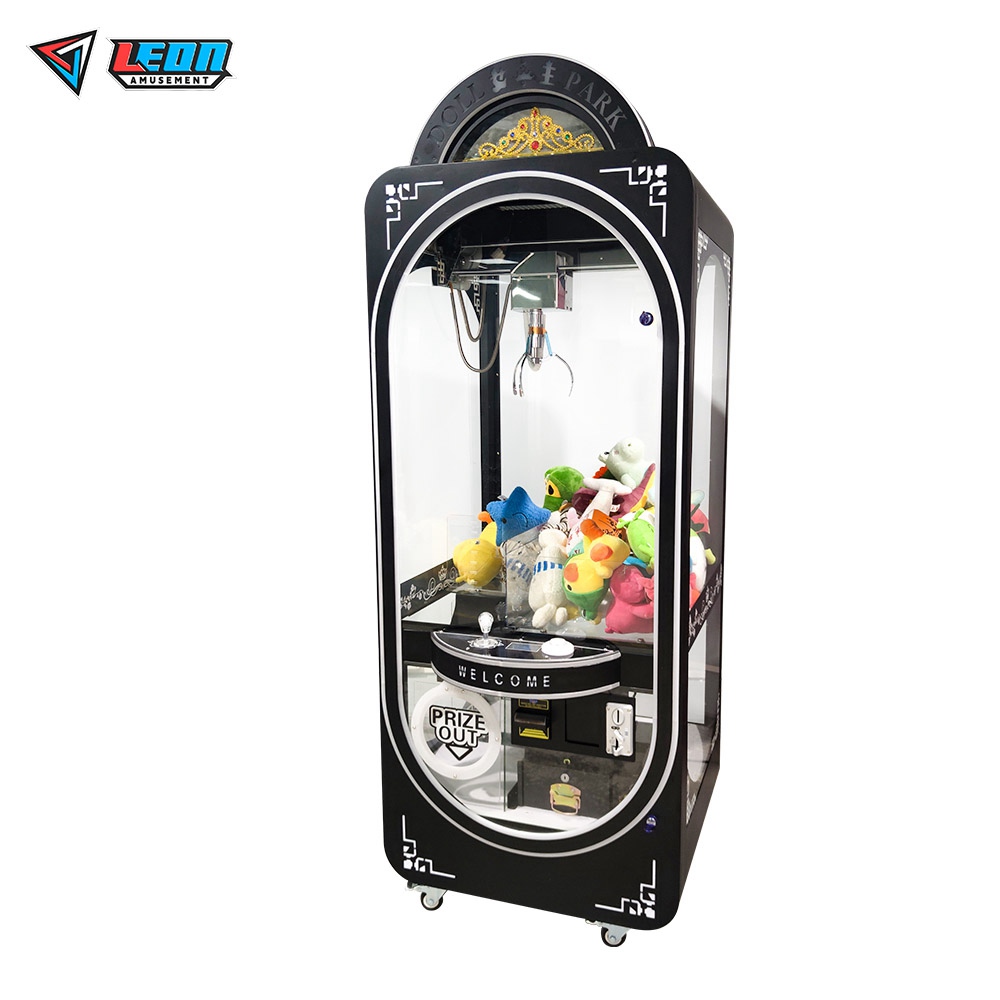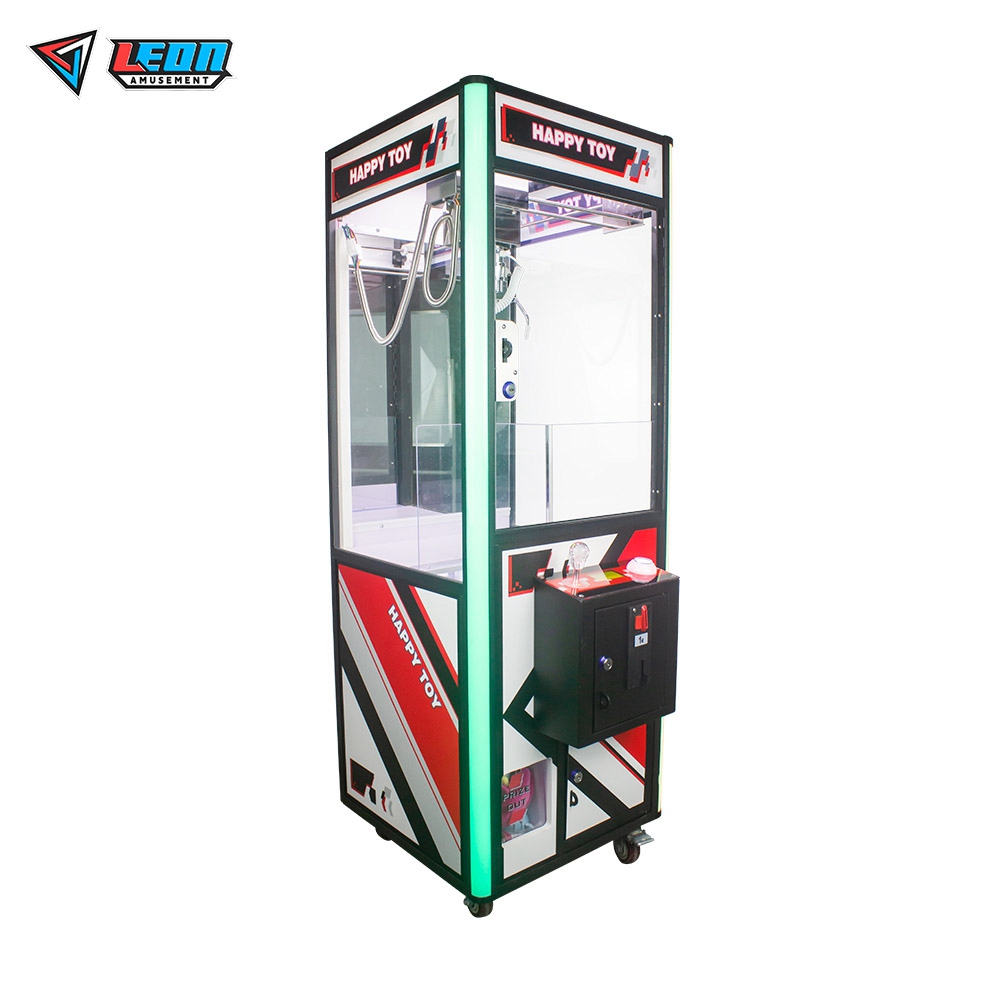Claw machines generate profits due to high foot traffic areas yielding $200-$500 weekly, low maintenance costs, versatile placements, and appeal across all ages.
Table of Contents
ToggleHigh Revenue Potential
Claw machines are generally installed in shopping malls, movie theaters, family restaurants and other places with high traffic. Therefore, people come into contact with machines one or more times on a regular basis.
Earnings Per Machine
The revenue potential of each claw machine will depend on the foot traffic and location of the machine. However, a well-positioned claw machine can expect to make between $200 to $500 weekly. For example, a claw machine placed at a cinema hall or a busy arcade is likely to generate more revenue due to high visibility and human traffic.
Cost Per Play vs. Prize Cost
The claw machine’s earnings are largely dependent on the cost per play and the prize cost. Claw machines operators charge between $1 to $2 per play. The actual cost of the prizes is, however minor, and it ranges from around 25 cents to $2 per piece. Therefore, operators price high-value prizes that are relatively cheap in order to attract players and maximize profits.
Multiple Machines and Multiplying Profits
Claw machine operators can grow their revenues manyfold by having multiple machines placed at different venues. This way, the performance of one unit is leveraged across all machines leading to a significant increase in earnings. Furthermore, monitoring the performance of each machine in terms of plays is vital in determining the placement and ensuring optimal return.
Seasonal and Promotional Strategies
Seasonal peaks and promotions are excellent revenue-maximizing strategies for claw machines. For example, themed play-toys are likely to attract more people playing during the holiday seasons. Similarly, a play promotion may enable customers to win an extra prize for every ten plays.

Low Maintenance Costs
Claw machines are not only popular and tend to have a high level of profit but also require a minimal maintenance cost. The complete design of the claw machines is simple and made of robust parts, allowing business owners to maximize profits through a small resource investment.
Routine Maintenance Procedures
Routine maintenance includes cleaning the glass, joystick, button check, and alignment with the mechanism of the claw. The routine maintenance of the claw machines is cheap. The checks can be performed quickly and do not require any technicality and are done on a weekly basis. It has helped prevent any major malfunctions that might lead to high maintenance costs.
Component Longevity and Durability
A claw machine’s parts are designed for heavy marketing. The electronic systems are basic. It coders the power system, credit, and the wiring system. The systems tend to last for some years without requiring any replacement. Mechanicals: the claw’s durability and the motor that runs the claw are robust and are needed on a weekly basis. The mechanical structure only needs lubrication and alignment.
Cost Efficiency of Repairs
Cost efficiency Most of the repairs do not cost too much. A spring, cable, of a claw can be purchased under $100. Most owners repair it themselves, which is quite cheap. The needy parts are available in the market. Doc the maintenance routine not require any technicality, and most of the owners can manage.
ROI from Low Maintenance
ROI Due low maintenance of claw machines, uptime is high, which concentrates the profit. The machines do not cost the owner much in maintenance, ensuring the owners’ continuance in the business.
Versatile Placement Options
Versatile Placement Options: The placement of claw machines can dramatically affect their revenue and profit potential. The flexibility in their placement allows claw machines to be found in more areas that considerable increase their popularity and financial success. Picking the best locations is required for optimal visibility and accessibility to users.
High Traffic Venues
Claw machines should be placed in highly populated areas to maximize revenue. The most common are shopping malls, theaters, supermarkets, family-oriented restaurants, or amusement parks. For example, a claw machine by the exit of a cinema can achieve maximum success within the families leaving a movie theater.
Thematic Venue Alignment
The thematic placement of machines correlates to the venue/territory that they occupy. A good example is placing claw machines in a movie theater with merchandise from new releases that fans would want to buy. Claw machines located in malls during the holiday season could provide access to uniquely themed gifts to attract shopping-focused individuals.
Diverse Placement Benefits
Moving the claw machine to locations that are not normally used such as an airport, gym, or office can bring new users. Each unique claw machine location attracts hard to reach groups by adding different usage hours and demographic input. For example, one at the airport attracts people with layovers, while one in a gym attracts adults looking for a break.
Analyzing Performance and Changing Strategies
Operating experts use when their revenue is low and each claw machine’s performance daily is observed. Criteria such as play times, hour-specific times, and user feedback might be consulted in order to change the claw machine’s location. Monitoring metrics used with daily difference patterns ensures superior performance and profit.

Strong Appeal to All Ages
Claw machines have a strong appeal to all ages, and they manage to attract a diverse audience with the thrilling game and appealing reward. They successfully involve a wide client base for one game while sustaining the business and a source of steady income.
Engaging Children and Families
First and foremost, the machines are an excellent way to keep children and their families entertained. Family restaurants, children fun fairs, and holiday resorts most often use these. Children are easily allured by the color display and love a challenge to grab a toy. A survey in family fun centers confirmed that playing the claw machine was the second most popular game after air hockey for families with kids ages 5-12.
Targeting Teens and Young Adults
The machines can also target the teen and young adult demographic. People in this age group often frequent the machines for purposes of nostalgia and an enjoyable challenge with their friends. These machines should be placed in cinema theaters, malls, and at the entrance and exit to cafes and ice cream parlors to attract this particular audience.
Attracting Adult Audiences
The adult audiences may also indulge in the claw machine if it offers interesting prizes such as electronics, nostalgic toys of the early decades, and collectibles. Adult gentlemen can be found in the evenings at favorite bars and lounges or holiday markets. At such a venue, a well-themed or branded claw machine attracts clients.
Marketing Strategies and Promotions
Overall, appealing to all these groups takes a proper marketing strategy. Running a promotion and adjusting the machine gifts based on the targets’ result increases customer returns. Players can also be awarded by increasing the price points in various size groups to promote them to continue playing. Themed competition nights can also be held to go with the market demands.



